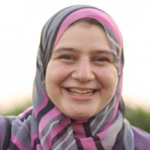- Morocco undertook relatively stringent lockdown and closure measures in response to the COVID-19 pandemic, consistently more stringent than the rest of the North Africa region and the world.
- Although, at times, cases and deaths were below regional and global averages, large waves occurred in late 2020 and then with the delta variant in mid-2021. A substantial vaccination campaign will hopefully help reduce cases going forward.
- Morocco’s recession in 2020 was more severe than the world economy and Middle East and North Africa contractions, in part due to stringent closures, but also due to the country’s exposure to global value chains and tourism, as well as drought.
- After recovering somewhat in February and April 2021, relative to November 2020, labour market indicators worsened again in June 2021.
- The substantial recovery in employment rates reversed in June 2021 and unemployment rates went back up, especially for women.
- A higher proportion of women who were employed in February 2020 were likely to be either unemployed or out of the labour force in June 2021, compared to either April or February 2021, but less than November 2020.
- The deterioration in labour market conditions in June 2021 is likely related to seasonality in the agricultural sector, where days worked by family workers as well as other inputs declined substantially relative to February and April 2021.
- With regards to changes in household income, April 2021 was worse than either February 2021 or June 2021, and even worse than November 2020 at the height of the pandemic.
- Farmers and other self-employed individuals experienced the largest declines in incomes, followed by informal wage workers.
- Outside agriculture, micro, small and medium businesses struggled the first quarter of 2021, with some recovery in the second quarter.
- All enterprise size categories reported more closures and a larger fraction reported decreases in revenue in the first quarter than the second quarter of 2021.
- Nevertheless, 90 per cent of micro enterprises and 82 per cent of small and medium enterprises reported decreased revenues in the second quarter of 2021 compared to the same period in 2019.
- A higher proportion of enterprises of all sizes complained of loss of demand and difficulty in accessing inputs in the second quarter than in the first quarter.
- A higher fraction of enterprises over time reported adjusting their business model to reduce physical contact with customers, with micro enterprises mostly using phones and small and medium enterprises using phones, web/app-based applications, and social media.
- The vast majority of micro firms and two-thirds of small and medium firms were not able to access any government support policies.
- The most common form of government support enterprises were able to access was business loans. Some small and medium firms also benefitted from salary subsidies.
- Access to government support for firms was greater in the first quarter than in the second quarter of 2021.
- The share of households reporting food insecurity increased substantially in April and June 2021, with declines in household income and increased prices driving food insecurity.
- A minority of households received some form of government assistance during the COVID-19 pandemic, but the reach of this assistance was highest in November 2020 and declined steadily since then.
- Household assistance was relatively well targeted to the households in the poorest income quartile, who were more than four times more likely to receive assistance in June 2021 than households in higher quartiles. Moreover, rates of assistance declined more gradually for this group than for other groups, suggesting that assistance was better targeted over time.
- Although children were almost universally back in school from February 2021 onwards, married women with children under six or with school-aged children were more likely to report increases in time spent caring for children compared to pre-pandemic levels, especially in April and June 2021.
- As time went on, a smaller proportion of people reported being worried about getting infected, but the proportion of those who were very worried increased from April to June 2021, although still less than what it was in February 2021.
- The proportion of those taking precautions such as social distancing, masking and handwashing is reportedly quite high (more than 85 per cent), but it fell gradually over time as levels of worry declined.
- The proportion of people reporting low wellbeing shot up from April to June 2021, despite having fallen in the previous period.

Authors
Caroline Krafft
Associate Professor, Humphrey School of Public Affairs,...

Research Fellows
Mohamed Ali Marouani
Associate Professor of Economics, Sorbonne University

Authors
Ruby Cheung
Economics Research Specialist, St. Catherine University

Authors
Ava LaPlante
Student double majoring in public policy and...

Authors
Ilhaan Omar
Student, School of Public Policy, St. Catherine...

Authors
Sarah Wahby
PhD student of Public Policy, Humphrey School...


